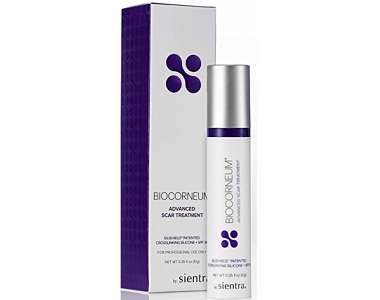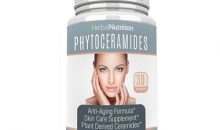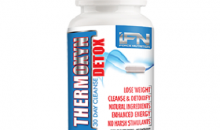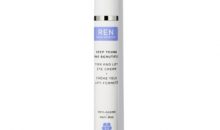 Scar Removal
Updated April, 2025
Scar Removal
Updated April, 2025
Dr. LinDirect BioCorneum Advanced Scar Supervision Review
Manufacturer’s Claims
Dr. LinDirect BioCorneum Advanced Scar Supervision Plus SPF30 is a silicone gel treatment to treat the appearance scars by making them less visible, flattening them and eliminating the itching that is part of the healing process This is our full review on the efficacy of BioCorneum.
BioCorneum Advanced Scar Supervision Plus SPF30 is a silicone-based patented gel formulation. It contains sunscreen factor 30 so it can be applied to areas such as the arms, neck, face, and legs which are exposed to the sun. BioCorneum flattens, softens, smooths and reduces scar discoloration. It also relieves wound- and scar-related sub-dermal itching, pain and surface sensitivity.
Once applied, BioCorneum creates a light, breathable, waterproof barrier over your wound within five minutes. With the protective outer barrier now in place over your scar, the scar tissue is safe from infection and invasion by chemicals and microbes, and can now heal unhindered.
Formula
- Octinoxate 7.5%
- Octisalate 5.0%
- Octocrylene 10%
- Oxybenzone 6.0%
- Polysiloxanes
- Silicon Dioxide
- Isopropyl Myristate.
The first four ingredients form the sunscreen barrier component of the gel. The last three ingredients are the inactive ingredients, and they facilitate the actual scar healing, flattening and improved appearance. The formulation of the product is safe for use on sensitive skin. It is fragrance-free, paraben-free, sensitivity-free and noncomedogenic.
The active ingredients are widely used in numerous sunblocks but there is some proof that Octinoxate may do more harm than good. This product contains the maximum allowable FDA percentage (7.5%) of Octinoxate. Recent research shows that Octinoxate:
- Breaks down when exposed to UV light, neutralizing its ability to protect from harmful rays.
- Could increase the skin’s exposure to aging free-radicals, even after sun exposure.
- May be a hormone disruptor, although this has not been conclusively proven in humans.
Instructions
Clean the affected area and ensure it is dry before applying a thin layer of BioCorneum, which should dry in 5 minutes. If a residue still persists, you have applied too much. Apply twice a day for best results. Apply 15 minutes before sun exposure. Do not apply to the eye area or open wounds, and consult a doctor if you have preexisting skin conditions. Use externally only.
Treat new scars for a minimum of 60 days and older ones for 90 days or more.
Cost
BioCorneum can be bought online from the Dr. LinDirect website for $50 (10 g) and $90 (50 g) at normal price. Sale discount prices appear from time to time. There appear to be no set bulk discounts available. The product is available through various retailers at different prices. Should you find it cheaper elsewhere, the website will match that price for you. BioCorneum is pricier than similar products in its class.
Possible Side Effects
Skin irritation, in which case you should discontinue the product and consult your doctor. Also, see the possible side effects from Octinoxate under ‘Ingredients’ above.
Guarantee
There is a 45-day returns policy. However, a minimum restocking fee of 15% applies if the product has been used (the fee could be increased), effectively rendering the ‘guarantee’ somewhat useless and ineffectual. The 45-day returns policy is not an adequate time in which to test the product, given the manufacturer’s directions to use the product for a minimum of 60 days.
Dr. LinDirect BioCorneum Advanced Scar Supervision Review – The Bottom Line
Three patents have been granted for this product and it contains sunscreen, unlike many other scar treatments. Few side effects have been reported, so the product is largely safe. The reviews range from very good to ineffectual.
Patients who are extremely serious about the longevity of their skin overall may want to try a product with zinc oxide rather than Octinoxate (see ‘ingredients’).
Most consumer concerns have been regarding the high price and customer service, with a few reports of packaging not matching the advertised product. This is concerning as there is no guarantee that the formulation of a product is the same as advertised when it arrives in significantly different packaging.






